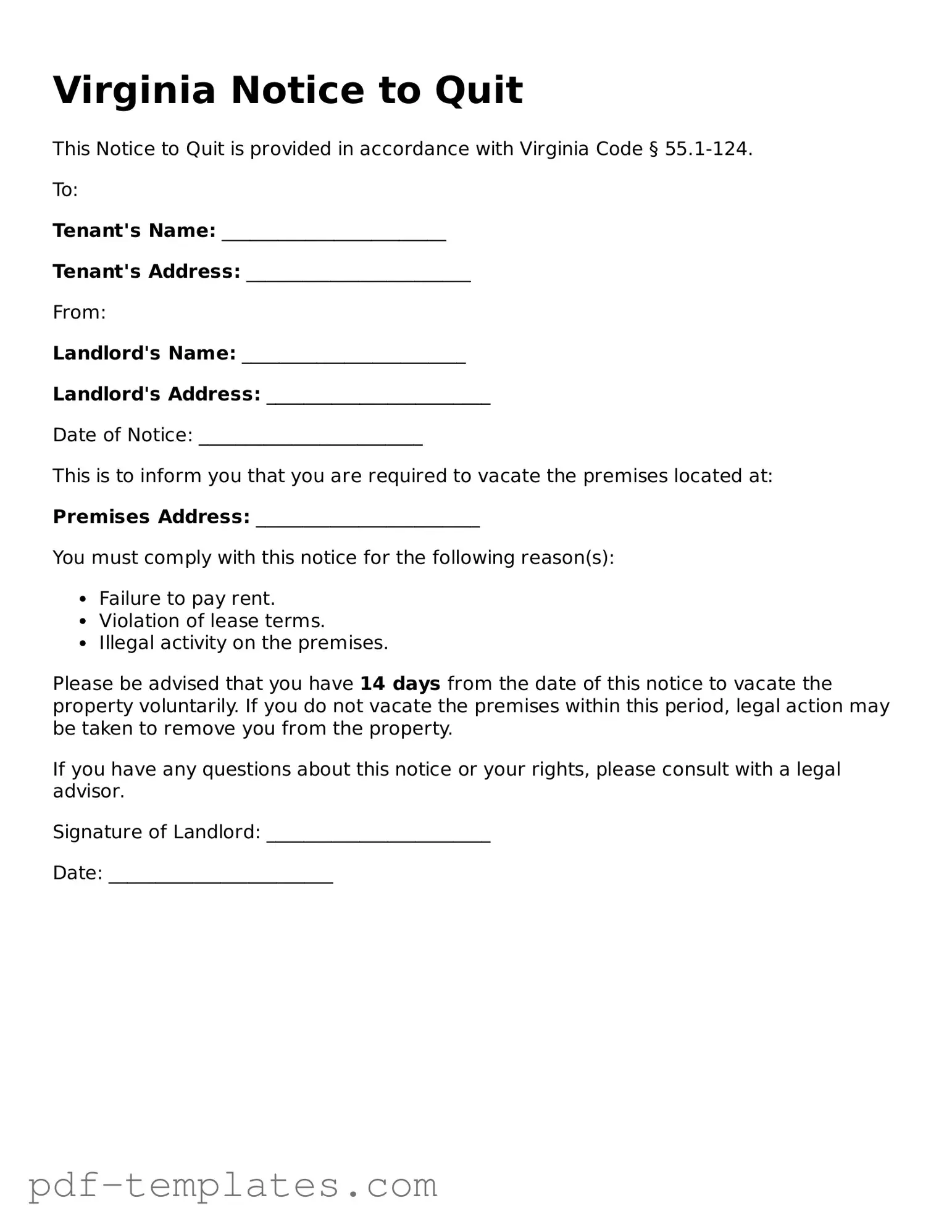The Virginia Notice to Quit form is similar to the Eviction Notice used in many states. Both documents serve as formal notifications to tenants regarding their lease violations or the termination of their rental agreements. The Eviction Notice specifies the reasons for eviction and outlines the time frame within which the tenant must vacate the premises. Just like the Notice to Quit, it aims to inform the tenant of their obligations and the potential consequences of non-compliance.
For those interested in healthcare planning, the Texas Living Will form serves as a vital resource to document your medical treatment preferences. This legal document articulates your wishes clearly, ensuring that your healthcare choices are respected. To learn more about this important tool, you can visit the detailed guide on the Texas Living Will form.
Another document that shares similarities is the Lease Termination Notice. This notice is issued when a landlord intends to end a lease agreement, either at the end of a lease term or due to specific circumstances. Like the Virginia Notice to Quit, the Lease Termination Notice provides the tenant with a clear timeline to vacate the property. Both documents emphasize the need for communication between landlords and tenants, ensuring that all parties are aware of their rights and responsibilities.
The Pay or Quit Notice is also comparable, as it addresses a tenant's failure to pay rent. This notice informs the tenant that they must either pay the overdue rent or vacate the premises within a specified time frame. The urgency in both documents is evident, as they both convey the necessity for timely action to avoid further legal consequences. The Pay or Quit Notice, much like the Notice to Quit, serves as a critical step in the eviction process.
A Fourteen-Day Notice to Cure or Quit is another document that aligns with the Virginia Notice to Quit. This notice is issued when a tenant violates a lease term, giving them a fourteen-day period to rectify the issue or face eviction. Both notices emphasize the importance of compliance with lease agreements and outline the consequences of failing to address violations. The focus remains on providing tenants with an opportunity to correct their actions before further legal steps are taken.
Lastly, the Notice of Default is similar in that it alerts tenants to a breach of their rental agreement. This document typically outlines the specific default, such as non-payment or property damage, and provides a timeframe for the tenant to remedy the situation. Both the Notice of Default and the Virginia Notice to Quit are designed to protect the rights of landlords while ensuring tenants are fully informed of their obligations. They highlight the necessity for prompt attention to avoid escalation to eviction proceedings.
